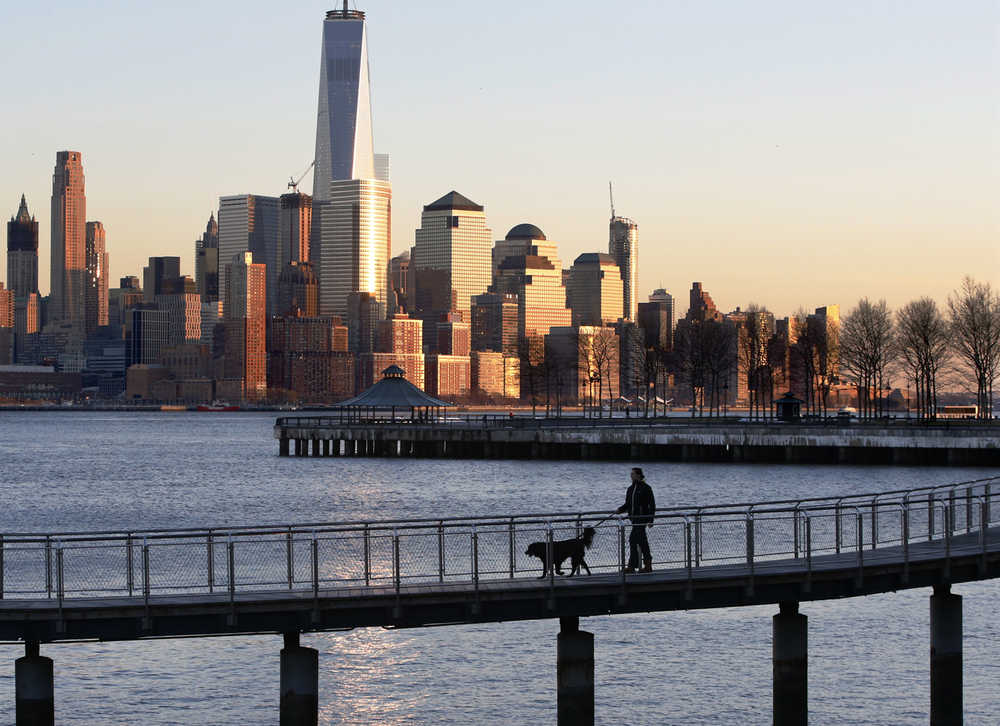NEW YORK — Tony-award winning playwright David Henry Hwang was carrying groceries down a Brooklyn street when he felt like he got hit in the back of the head. He suddenly couldn’t walk straight.
“I kept veering into a wall, then a parked car. And that’s when I realized I was bleeding,” Hwang, the author of “M. Butterfly,” said this week.
Hwang had been slashed with a blade by someone who came out of nowhere. The wound was so deep it severed an artery leading to his brain.
He isn’t the only victim of such an unusual crime. Since December, about a dozen such random, unprovoked slashings have been reported across the city, including three this week on subway trains. All were committed by strangers, police said. They used knives, razors and, in one instance, possibly a machete.
Police say the spate of attacks is largely a coincidence. Investigators believe they were committed by different, unconnected people. But the sheer randomness of the crimes has reinforced old fears about safety in a city of strangers.
“I like to think that, as a New Yorker, I’m fairly aware — conscious of people around me,” Hwang said. “But this happened on a dark corner of my block. This was a random attack, and the number of recent random attacks surprises me. Is this a new phenomenon?”
The idea of a “thrill crime,” where the perpetrator seeks to feel powerful through an attack on a stranger, is not new: A good example, criminologists say, is the knockout assault that surfaces occasionally, where teenagers try to knock someone out with a single punch. The attacks seem random, but there’s often a connection, even if it’s just in motive.
“They want to create anxiety, to feel powerful, to laugh at the results,” said criminologist Jack Levin of Northeastern University, who studies the crime.
There has been an uptick in knife attacks citywide the past few months, but police statistics don’t distinguish between random and targeted attacks. And overall crime is near modern-era lows.
Commissioner William Bratton said this week that crime is inescapable.
“The reality is we still have crime in New York City. We’ll always have crime in New York City,” he said. “But the reality is also that there is less crime in this city than there has been at any time in the last 25 to 50 years.”
Chief of Detectives Robert Boyce said the spate was “a little unusual for us,” but he disregarded the idea of a copycat crime. He said officials were working quickly to arrest the perpetrators. At least three people have been arrested already.
One man was accused of slashing a 71-year-old woman on the cheek as she rode the subway to work. Another man with a history of assault arrests was charged with an unprovoked slashing attack on a man from New Jersey who was in the city to have dinner with friends. The victim in that assault needed 150 stitches to close the wound in his face.
Amanda Morris, 24, of Brooklyn, was walking to a grocery store job in Manhattan on Jan. 6 when a man who had been walking beside her suddenly reached out, slashed her face and dashed off. The attack was recorded by a security camera.
“I felt like I got punched in the face,” Morris told The New York Post. “It was like, ‘Oh, that’s weird. Why would someone punch me?’ Suddenly, blood was all over my hands, and I started crying.”
A man with a long history of arrests was later charged in the attack. He has since been accused of a similar slashing attack on a woman in the Bronx on Jan. 1 and is suspected in other assaults.
Defendants in the slashing cases could face five to 25 years in prison.
The randomness of such a crime can cause panic, but it shouldn’t, authorities say.
“At the end of the day, there are greater risks in life than this,” said Dr. Jason Hershberger, head of the psychiatry department at Brookdale University Hospital and Medical Center. “This has more to do with how afraid we are of the unpredictable than a real safety problem.”

